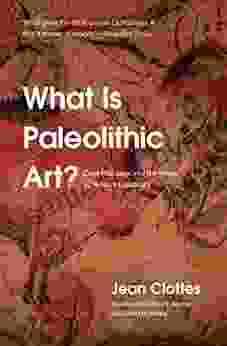Unlocking the Secrets of Cave Paintings: A Journey into the Dawn of Human Creativity

In the depths of caves, where darkness envelops and silence reigns, lie hidden treasures that hold the key to understanding the origins of human creativity. Cave paintings, etched into the walls of these subterranean sanctuaries, transport us back in time, providing a captivating glimpse into the minds and cultures of our ancestors. These mesmerizing artworks, created with pigments derived from minerals and charcoal, offer a profound window into the cognitive development, imagination, and spirituality of early humans.
4.3 out of 5
| Language | : | English |
| File size | : | 6219 KB |
| Text-to-Speech | : | Enabled |
| Screen Reader | : | Supported |
| Enhanced typesetting | : | Enabled |
| Word Wise | : | Enabled |
| Print length | : | 216 pages |
| Lending | : | Enabled |
Ancient Masterpieces
The earliest cave paintings, dating back to over 40,000 years ago, are a testament to the remarkable artistic abilities of our predecessors. The Chauvet Cave in France, discovered in 1994, boasts an extraordinary collection of animal depictions, including mammoths, lions, horses, and rhinoceroses, rendered with astonishing realism. The Lascaux Caves, also in France, are another iconic site, showcasing stunning frescoes of animals, human figures, and enigmatic symbols that have captivated generations.
These ancient masterpieces were not mere artistic creations but also played a vital role in the lives of our ancestors. They served as ceremonial spaces, places of gathering and storytelling, and perhaps even functioned as a form of proto-writing, conveying knowledge and beliefs from one generation to the next. The vivid depictions of animals, often depicted in hunting scenes, suggest that these paintings may have played a role in ensuring successful hunts and securing the survival of the community.
Symbolism and Storytelling
Beyond their remarkable artistic qualities, cave paintings are also a rich source of symbolic imagery and narratives. Animals, the most common subject matter, were often portrayed with exaggerated features or depicted in unusual postures, hinting at their spiritual or mythological significance. The use of hand stencils, negative handprints, and other abstract symbols further adds to the enigmatic nature of these artworks, inviting speculation about their hidden meanings.
Researchers have proposed that some cave paintings may depict shamanistic rituals or trance-like states, reflecting the complex spiritual beliefs and practices of early humans. The recurring presence of pregnant animals or animals depicted in the act of giving birth suggests that fertility and the cyclical nature of life were also central themes. By piecing together the fragments of these ancient stories, we can gain invaluable insights into the worldview and belief systems of our prehistoric ancestors.
Cognitive Revolution
The creation of cave paintings coincided with a significant period of cognitive and behavioral change known as the Cognitive Revolution. This transformation, which occurred around 70,000 years ago, witnessed the emergence of symbolic thinking, language, and complex social structures. Cave paintings are believed to have played a pivotal role in this cognitive revolution, serving as a catalyst for imaginative thought, communication, and the development of abstract reasoning.
By engaging with these enigmatic artworks, our ancestors exercised their cognitive abilities, stimulated their imaginations, and honed their capacity for symbolic representation. The act of creating and contemplating cave paintings may have fostered the development of higher-Free Download thinking skills, such as planning, problem-solving, and the ability to imagine future scenarios.
Preservation and Conservation
The preservation of cave paintings is of paramount importance for safeguarding our cultural heritage and ensuring that future generations can continue to appreciate these invaluable works of art. Cave paintings are fragile and susceptible to damage from environmental factors, such as humidity, temperature fluctuations, and water seepage. Conservation efforts are essential to protect these ancient treasures from further deterioration and ensure their longevity.
Responsible tourism practices, including limiting access to sensitive areas, controlling visitor numbers, and implementing strict temperature and humidity controls, are crucial for the preservation of cave paintings. Advanced technologies, such as 3D scanning and digital documentation, can also play a vital role in preserving these artworks for posterity.
Cave paintings are a profound testament to the ingenuity, creativity, and cognitive development of our ancestors. These enigmatic artworks provide an unparalleled glimpse into the minds and cultures of early humans, offering insights into their beliefs, rituals, and artistic sensibilities. By unlocking the secrets of cave paintings, we not only appreciate the beauty and complexity of these ancient masterpieces but also gain a deeper understanding of the origins of human creativity and the remarkable journey that has brought us to where we are today.
As we continue to explore and study these subterranean treasures, we uncover new layers of meaning and symbolism, enriching our understanding of the human experience and the enduring power of art to connect us across time and cultures. Preserving and protecting cave paintings is not just an act of safeguarding our cultural heritage but also an investment in the future, ensuring that generations to come can continue to marvel at the dawn of human creativity.
4.3 out of 5
| Language | : | English |
| File size | : | 6219 KB |
| Text-to-Speech | : | Enabled |
| Screen Reader | : | Supported |
| Enhanced typesetting | : | Enabled |
| Word Wise | : | Enabled |
| Print length | : | 216 pages |
| Lending | : | Enabled |
Do you want to contribute by writing guest posts on this blog?
Please contact us and send us a resume of previous articles that you have written.
 Book
Book Novel
Novel Page
Page Chapter
Chapter Text
Text Story
Story Genre
Genre Reader
Reader Library
Library Paperback
Paperback E-book
E-book Magazine
Magazine Newspaper
Newspaper Paragraph
Paragraph Sentence
Sentence Bookmark
Bookmark Shelf
Shelf Glossary
Glossary Bibliography
Bibliography Foreword
Foreword Preface
Preface Synopsis
Synopsis Annotation
Annotation Footnote
Footnote Manuscript
Manuscript Scroll
Scroll Codex
Codex Tome
Tome Bestseller
Bestseller Classics
Classics Library card
Library card Narrative
Narrative Biography
Biography Autobiography
Autobiography Memoir
Memoir Reference
Reference Encyclopedia
Encyclopedia Napoleon Hill
Napoleon Hill Umair Haque
Umair Haque Mario Glowik
Mario Glowik James J Raciti
James J Raciti Shaka Senghor
Shaka Senghor Lawrence Schiller
Lawrence Schiller Jane Barsby
Jane Barsby Maxine Leeds Craig
Maxine Leeds Craig Jamie Watters
Jamie Watters Stephen Arseneault
Stephen Arseneault James Ori
James Ori Leigh Sales
Leigh Sales Janet Catherine Berlo
Janet Catherine Berlo Lisa Latimer
Lisa Latimer Kathryn Mcelroy
Kathryn Mcelroy Robert A Baruch Bush
Robert A Baruch Bush Jay Bell
Jay Bell Kevin Neary
Kevin Neary Robert H Shumway
Robert H Shumway Stephanie Rohrbach
Stephanie Rohrbach
Light bulbAdvertise smarter! Our strategic ad space ensures maximum exposure. Reserve your spot today!

 Felix CarterUnveiling the Intricacies of English Contract Law: A Comprehensive Guide for...
Felix CarterUnveiling the Intricacies of English Contract Law: A Comprehensive Guide for...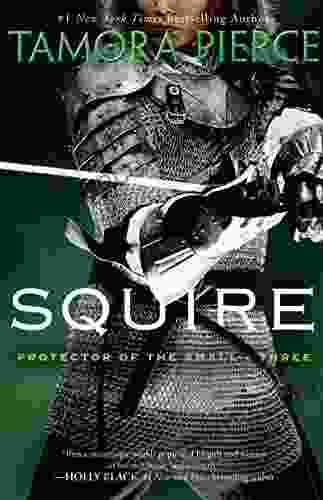
 Thomas PowellSquire Of The Protector Of The Small Quartet: A Literary Odyssey into the...
Thomas PowellSquire Of The Protector Of The Small Quartet: A Literary Odyssey into the...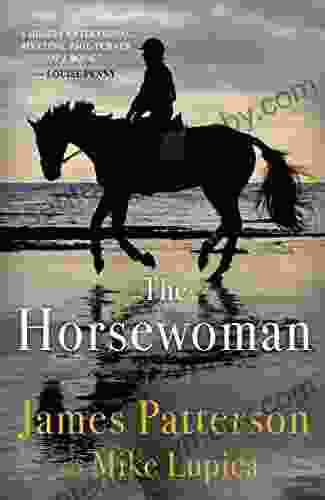
 Natsume SōsekiThe Horsewoman by James Patterson: A Thrilling Tale of Courage, Danger, and...
Natsume SōsekiThe Horsewoman by James Patterson: A Thrilling Tale of Courage, Danger, and...
 W.B. YeatsUnveiling the Essence of Thanksgiving: A Love Letter to Gratitude | The Love...
W.B. YeatsUnveiling the Essence of Thanksgiving: A Love Letter to Gratitude | The Love...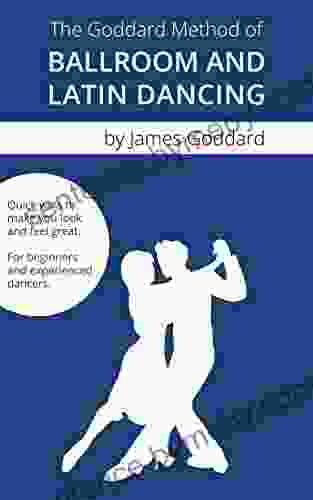
 Geoffrey BlairThe Goddard Method of Ballroom and Latin Dancing: Unleash Your Inner Dancer
Geoffrey BlairThe Goddard Method of Ballroom and Latin Dancing: Unleash Your Inner Dancer Houston PowellFollow ·6.5k
Houston PowellFollow ·6.5k Alex ReedFollow ·16.8k
Alex ReedFollow ·16.8k Brent FosterFollow ·10.7k
Brent FosterFollow ·10.7k Douglas FosterFollow ·13.3k
Douglas FosterFollow ·13.3k Jack LondonFollow ·5.2k
Jack LondonFollow ·5.2k Hugh BellFollow ·17.6k
Hugh BellFollow ·17.6k Jedidiah HayesFollow ·13.6k
Jedidiah HayesFollow ·13.6k Kelly BlairFollow ·8.9k
Kelly BlairFollow ·8.9k

 Franklin Bell
Franklin BellHow Businesses Can Thrive In The New Global Neighborhoods
The world is becoming...

 Rob Foster
Rob FosterCard Manipulations Volume 1: A Masterclass in Deception...
Unveiling the...
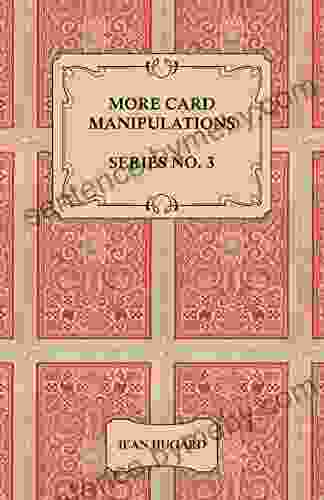
 Enrique Blair
Enrique BlairUnveil the Secrets of Card Manipulation: Dive into "More...
Step into the captivating world...

 Jamal Blair
Jamal BlairComedy Fillers 200 Quips One Liners Jean Hugard
Unlock the Secrets of...

 Chase Simmons
Chase SimmonsUnlock Financial Independence: A Comprehensive Guide to...
In a world where financial security seems...

 Dion Reed
Dion ReedUnveiling Global Market Entry Strategies: A Comprehensive...
Global Market Entry Strategies:...
4.3 out of 5
| Language | : | English |
| File size | : | 6219 KB |
| Text-to-Speech | : | Enabled |
| Screen Reader | : | Supported |
| Enhanced typesetting | : | Enabled |
| Word Wise | : | Enabled |
| Print length | : | 216 pages |
| Lending | : | Enabled |


